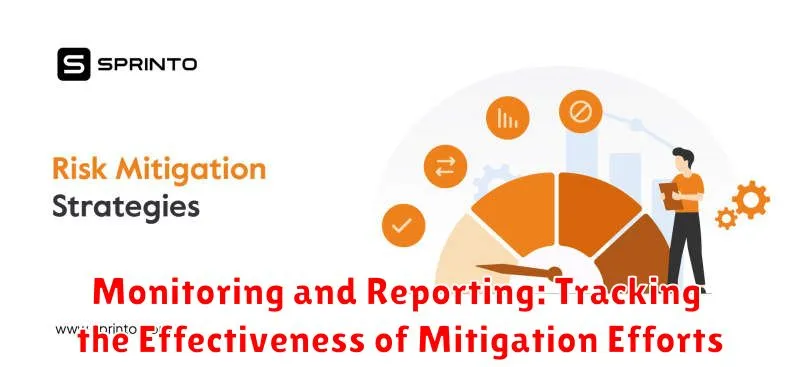In today’s complex digital landscape, digital advertising faces a persistent and evolving threat: malicious bots. These automated entities can wreak havoc on marketing campaigns, leading to ad fraud, skewed analytics, and a significant waste of advertising budget. As traditional bot detection methods become increasingly ineffective against sophisticated botnets, it’s crucial for advertisers and publishers to adopt advanced strategies. This article delves into the cutting-edge techniques used for bot detection and mitigation in the digital advertising ecosystem, providing a comprehensive overview of the challenges and the innovative solutions available to combat them.
This exploration of advanced strategies for bot detection aims to equip professionals with the knowledge necessary to safeguard their digital advertising investments. We will examine a range of sophisticated approaches, including machine learning algorithms, behavioral analysis, and real-time monitoring systems, which offer a more robust defense against fraudulent bot activity. By understanding these advanced techniques, stakeholders can proactively mitigate the impact of bot traffic, ensuring that advertising spend reaches genuine users and delivers a meaningful return on investment across various platforms and geographical regions.
Understanding the Landscape of Bot Fraud in Online Advertising
Bot fraud in online advertising represents a significant challenge, costing the industry billions of dollars annually. These fraudulent activities involve the use of automated software, or bots, to simulate legitimate user interactions, ultimately inflating ad impressions and click-through rates.
The primary motivation behind bot fraud is financial gain. Perpetrators profit by falsely representing ad performance metrics, leading advertisers to pay for non-human traffic that provides no actual value.
Types of Bot Fraud:
- Impression Fraud: Generating fake ad impressions.
- Click Fraud: Falsely clicking on ads.
- Conversion Fraud: Simulating user conversions, such as form submissions or purchases.
The consequences of bot fraud extend beyond financial losses. It also compromises the integrity of advertising data, making it difficult for marketers to accurately assess campaign performance and optimize their strategies. Furthermore, it erodes trust in the digital advertising ecosystem.
The Evolution of Bot Detection Techniques

The methods employed to detect and mitigate bot activity in digital advertising have undergone significant evolution, driven by the increasing sophistication of bots themselves. Early techniques relied heavily on simple IP address blocking and user-agent filtering. These methods, however, quickly proved inadequate as bot operators learned to spoof IP addresses and mimic legitimate user agents.
Subsequently, heuristic-based detection emerged, focusing on identifying patterns such as abnormally high click-through rates or unusual browsing behavior. This approach was more effective but still susceptible to circumvention as bots became more sophisticated in replicating human-like behavior.
The advent of JavaScript-based detection marked a crucial advancement. By executing scripts within the user’s browser, advertisers could gather more granular data about the user’s environment and behavior, making it harder for bots to impersonate genuine users. This era also saw the rise of more sophisticated fingerprinting techniques that could identify devices even after IP address and user-agent changes.
Currently, machine learning algorithms are at the forefront of bot detection. These algorithms can analyze vast amounts of data to identify subtle anomalies and predict bot activity with increasing accuracy. The ongoing development and refinement of these techniques are essential to stay ahead of the evolving threat posed by sophisticated bots in the digital advertising ecosystem.
Behavioral Analysis: Identifying Bot-Like Patterns
Behavioral analysis plays a crucial role in differentiating between genuine human users and automated bot traffic. This method focuses on scrutinizing user interactions and identifying patterns that deviate from typical human behavior.
Key indicators of bot-like behavior include:
- Unusually high click-through rates (CTR): Bots often click on ads at a rate far exceeding that of human users.
- Short dwell times: Bots may quickly navigate away from landing pages, indicating a lack of genuine interest.
- Suspicious browsing patterns: Bots might visit pages in a non-linear or illogical sequence.
- Inconsistent geolocation data: Discrepancies between IP addresses and stated locations can raise red flags.
- Repetitive actions: Bots frequently exhibit repetitive behaviors, such as repeatedly filling out forms or clicking on the same elements.
By analyzing these behavioral anomalies, advertisers can effectively pinpoint and mitigate bot-driven fraud, leading to improved campaign performance and a more accurate understanding of user engagement.
Leveraging Machine Learning for Real-Time Bot Detection
Machine learning (ML) offers sophisticated solutions for identifying and mitigating bot activity in digital advertising. Its ability to analyze vast datasets and learn complex patterns makes it a powerful tool for real-time bot detection.
Key Machine Learning Techniques
Several ML algorithms are particularly effective:
- Supervised learning: Trains models on labeled data to distinguish between bot and human traffic.
- Unsupervised learning: Identifies anomalies and unusual patterns in data that may indicate bot activity.
- Reinforcement learning: Develops adaptive strategies to counter evolving bot tactics.
Real-time Application
ML models can be integrated into ad platforms to analyze user behavior, such as browsing patterns, click-through rates, and time spent on pages, in real time. This allows for immediate identification and blocking of suspicious traffic, minimizing the impact of bot fraud.
Benefits of ML in Bot Detection
ML provides several advantages:
- Adaptability: Models can adapt to new bot strategies and remain effective over time.
- Accuracy: ML algorithms can achieve high levels of accuracy in identifying bot activity.
- Scalability: ML solutions can be scaled to handle large volumes of traffic.
Implementing CAPTCHA and Turing Tests Effectively
CAPTCHA (Completely Automated Public Turing test to tell Computers and Humans Apart) and other Turing tests remain valuable tools in differentiating between human users and bots. However, their effectiveness hinges on careful implementation.
A key factor is user experience. Overly complex or frequent CAPTCHAs can frustrate legitimate users, leading to abandonment. A/B testing various CAPTCHA types (text-based, image-based, audio-based) can help identify the optimal balance between security and usability.
Furthermore, adaptive CAPTCHAs can be employed. These systems assess user behavior and only present a CAPTCHA when suspicious activity is detected, minimizing disruption for genuine users. Invisible reCAPTCHA is one example of this approach. Regular updates and variations are crucial to prevent bots from learning to circumvent the tests.
Considerations should also be given to accessibility guidelines, ensuring CAPTCHAs are usable by individuals with disabilities. Providing alternative audio-based options or simplified visual challenges can improve inclusivity.
Advanced Mitigation Strategies: Honeypots and Decoy Content
Beyond traditional bot detection methods, advanced strategies employing honeypots and decoy content offer proactive measures to trap and identify malicious bots. These techniques involve creating seemingly legitimate targets that attract bots, allowing for their identification and analysis without affecting real users.
Honeypots
Honeypots are designed as attractive targets for bots, such as hidden form fields or seemingly valuable content accessible only through bot-like behavior. When a bot interacts with a honeypot, it reveals its presence and allows for immediate blocking or further investigation.
Decoy Content
Decoy content involves creating fake ads or landing pages that are only visible to bots. By monitoring which bots interact with these decoys, advertisers can identify and block them from accessing genuine advertising campaigns. This approach effectively wastes the bots’ resources and prevents them from generating fraudulent impressions or clicks.
The effectiveness of honeypots and decoy content relies on their ability to mimic legitimate targets while remaining undetectable to human users. Regular updates and variations are crucial to maintain their effectiveness against evolving bot technologies.
The Role of Blockchain in Verifying Ad Impressions
Blockchain technology offers a promising avenue for verifying ad impressions and combating bot fraud in digital advertising. Its decentralized and transparent nature allows for an immutable record of ad transactions, making it difficult for bots to falsely inflate impression counts.
By creating a shared, distributed ledger of ad events, blockchain can provide a verifiable audit trail, ensuring that only legitimate impressions are recorded and paid for. This enhanced transparency can help advertisers gain greater confidence in their ad campaigns and reduce wasted ad spend.
Here are some potential benefits of using blockchain for ad verification:
- Transparency: All ad transactions are recorded on a public ledger.
- Immutability: Once recorded, data cannot be altered, preventing fraud.
- Real-time Verification: Impressions can be verified in real-time, reducing latency.
- Improved Trust: Fosters greater trust between advertisers and publishers.
While the implementation of blockchain in digital advertising is still in its early stages, its potential to revolutionize ad verification and combat bot fraud is significant.
Collaborating with Industry Partners to Combat Bot Fraud
Combating bot fraud in digital advertising requires a united front. Collaboration with industry partners, including ad networks, publishers, verification services, and technology vendors, is critical for sharing threat intelligence and developing standardized detection methodologies.
Key areas of collaboration include:
- Data Sharing: Anonymized data on bot signatures and fraudulent activities can be shared securely amongst partners to improve detection accuracy.
- Best Practices: Developing and adhering to industry-wide best practices for ad serving, verification, and fraud prevention.
- Joint Research: Collaborative research efforts to identify emerging bot threats and develop innovative mitigation strategies.
- Standardization: Working towards standardized metrics and reporting formats to facilitate transparency and accountability across the advertising ecosystem.
By working together, industry partners can collectively strengthen defenses against bot fraud and ensure a more trustworthy and effective digital advertising landscape. This collaborative approach helps to identify and address vulnerabilities that individual entities may miss.
Monitoring and Reporting: Tracking the Effectiveness of Mitigation Efforts

Monitoring and reporting are crucial components in the ongoing battle against bot fraud in digital advertising. These processes enable advertisers and platforms to assess the efficacy of deployed mitigation strategies and make informed adjustments.
Key Performance Indicators (KPIs) to monitor include:
- Bot traffic percentage: Tracking the proportion of non-human traffic detected.
- Click-Through Rate (CTR) anomalies: Identifying unusually high or low CTRs indicative of bot activity.
- Conversion rates: Monitoring conversion rates to detect discrepancies caused by bot-generated traffic.
- Cost per Acquisition (CPA): Analyzing CPA to assess the impact of bot traffic on campaign ROI.
Regular reports should be generated to visualize trends, identify potential vulnerabilities, and communicate findings to stakeholders. These reports should detail the methodologies used for detection, the volume of bot traffic identified, and the impact of mitigation efforts on campaign performance. This data-driven approach is critical for optimizing bot detection and prevention strategies and ensuring the integrity of advertising campaigns.
Future Trends in Bot Detection and Prevention
The landscape of bot detection and prevention is constantly evolving, driven by advancements in both bot technology and defensive strategies. Future trends point towards more sophisticated and integrated approaches. One key area is the increased reliance on artificial intelligence (AI) and machine learning (ML), not only for detection but also for predicting and preemptively blocking bot activities.
Advancements in behavioral biometrics, analyzing subtle user interactions, will become more prevalent. This allows for identification of bots that mimic human behavior with greater accuracy.
Another emerging trend is the adoption of decentralized technologies, such as blockchain, to enhance transparency and verification across the advertising ecosystem. This includes ensuring the authenticity of ad impressions and reducing fraudulent activities.
The industry will also likely see increased collaboration and data sharing among ad platforms, publishers, and security vendors to create a more comprehensive and effective defense against bots. Furthermore, stricter regulatory measures and legal frameworks will play a crucial role in deterring bot fraud.

